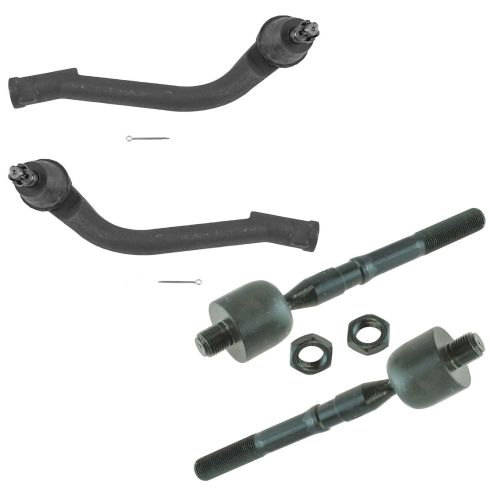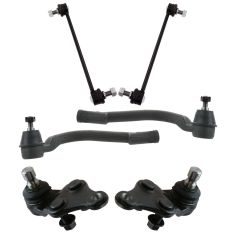1ASFK04611-Hyundai Kia Front Driver & Passenger Side Inner & Outer 4 Piece Tie Rod Set TRQ PSA55558

Replaces
2016 Kia Cadenza Front Driver & Passenger Side Inner & Outer 4 Piece Tie Rod Set TRQ PSA55558

Product Reviews
Loading reviews
4.12/ 5.0
8
8 reviews
Good package good price
April 4, 2019
Good value. Works fine.
So far so good.
August 15, 2019
I had purchased some tie rods from this site. I was skeptical at first but it came in a efficient timely manner. I didnt see that parts because my mechanic applied them to my vehicle. I would definitely purchase auto parts from here again! Prices are affordable as well!
Tie rods
October 27, 2020
I bought inter and outer tie rods back in June of this year my inter tie rods for my kia optima And now I have to replace them in four months that's not right they should have last it for a while how can I send them back are they life time warranty on them
Great quality for the price
April 17, 2021
Shipped quickly and came as described. The videos 1A posts are always incredibly helpful.
September 25, 2021
Perfect!
June 2, 2022
Great
Front inner and outer tie rods.
August 15, 2022
1A was efficient and the parts were as advertised.
Nice!!!
July 16, 2024
Good quality. Everything fit perfectly.
Customer Q&A
will it fit a hybrid 2011 sonata ?
December 9, 2021
10
No, these parts will not fit the Hybrid model.
December 9, 2021
Andra M
Wil this part fit a 2014 kia optima EX 2.4L?
December 28, 2023
10
I found out the hard way, the Hyundai (and probably Kia) have an assortment of front suspension types. The parts I thought were correct, weren't. Get the details of your suspension from your VIN, then cross type to insure compatibility. FYI, my 2011 Sonata had a "Sport" suspension, unknown to me.
If you're changing out the inner tie rods, you need a special tool, also available from the 1A Auto site.
December 28, 2023
Herbert G
10
These are not compatible with the model of your vehicle. Currently, we do not carry this part for your vehicle. We're always updating our inventory so please check back soon!
December 29, 2023
Meghan R
Kia is a registered trademark of Kia Motors America Inc. 1A Auto is not affiliated with or sponsored by Kia or Kia Motors America Inc.
See all trademarks.












